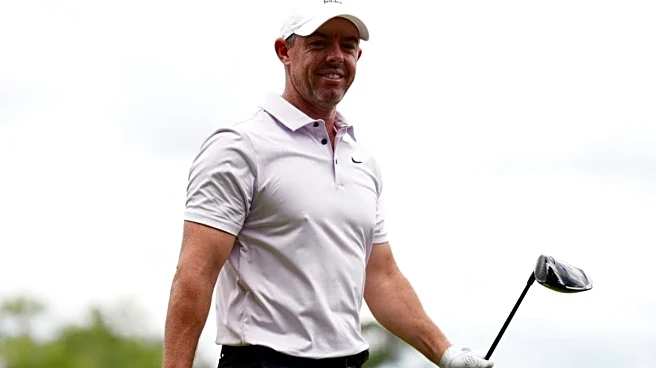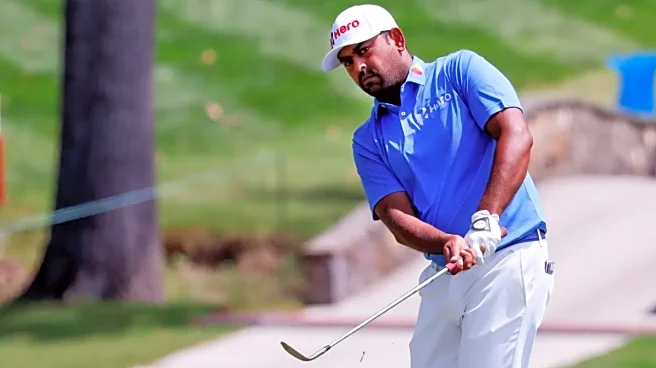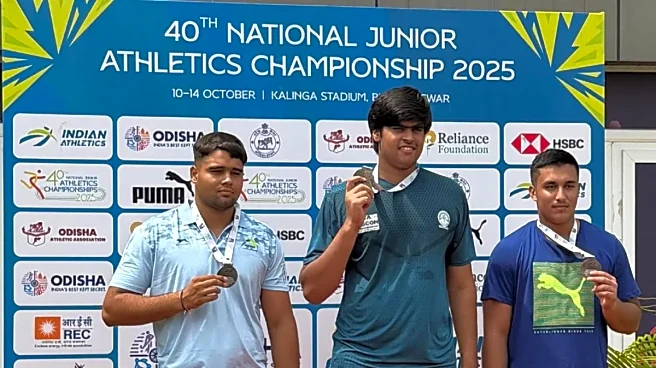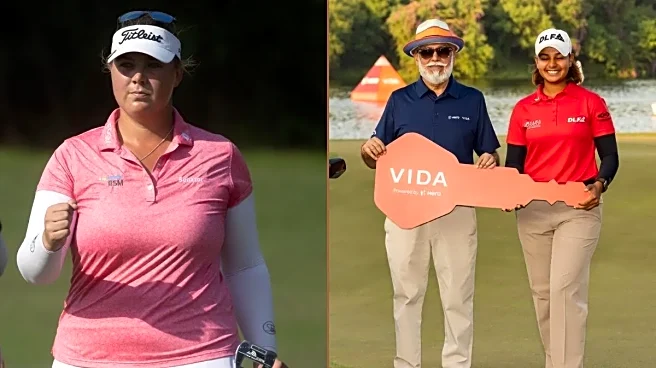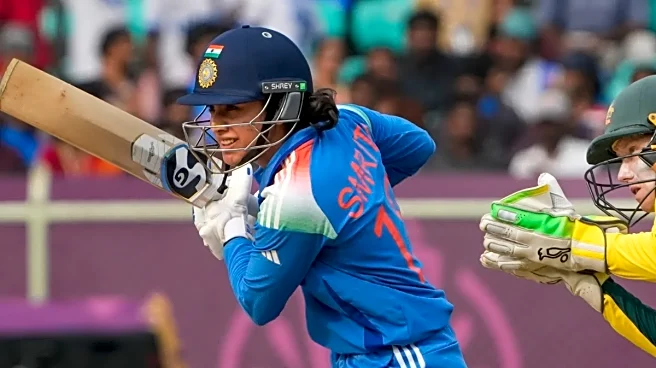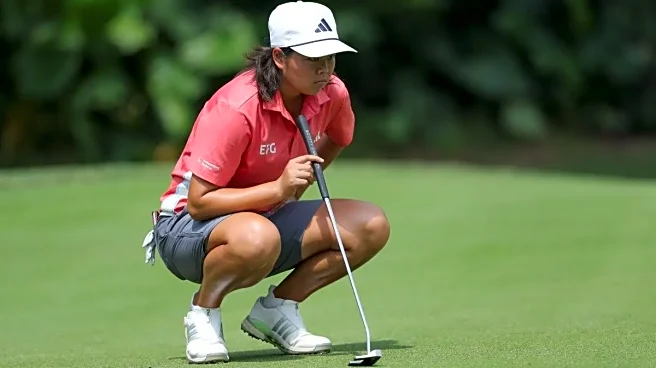New Delhi, Oct 15: He teed off as part of a warm-up drill with a few peers from the European Tour on a warm Tuesday morning at the iconic Delhi Golf Club - a place whose every hole he ought to know by heart after years of evenings spent here.
Under the soft October sun, the ace Indian golfer traded laughter and easy banter with the group while a motley crowd of spectators trailed behind, squinting from the sidelines as they tried to read the greens and fairways.
With the Lodhi-era ruins and the faint city hum beyond the trees in the background, the scene felt less like a pro warm-up and more like a hometown ritual: familiar, slightly ritualised, and quietly electric. That intimacy helps explain why, despite the storms of a difficult season and the angst
of changing equipment that had served him for a decade, Shubhankar's voice rarely hardens.
"When I teed off the first hole, it felt like I never left," he told reporters, smiling at the memory of evening putting contests and long practice sessions from his youth. The course greets him the way an old friend does - with an easy assumption that you already understand one another.
That intimacy helps explain why, despite the storms of a difficult season and the angst of changing equipment that had served him for a decade, Shubhankar's voice rarely hardens.
He carries the twin reputations of a prodigy and a patient craftsman: at 21 he rewrote the record books by becoming the youngest Indian to win on the European Tour when he captured the Joburg Open in December 2017; two months later he added the Maybank Championship after a final-round 62; and he finished his debut season as the 2018 Sir Henry Cotton Rookie of the Year. Those triumphs arrived amid a steady, methodical stroke-making that has long been his calling card.
But form is a living thing. This year, Shubhankar has been in the middle of a long experiment - changing clubs, shafts and even the ball, a process that sent him across continents in search of the right match.
"I went everywhere in the world," he says frankly - America, Thailand, Dubai - an odyssey that, he admits, left him inconsistent and at times deeply frustrated. Range sessions often felt promising; tournament golf, less so. "You see something on the range and you take it to the course and it's different. Unless you play it in the tournament you don't really know the tendencies. "
The consequence was a season of narrow misses. Cuts lost by a stroke or two, nights replaying what might have been - the kind of small margins that gnaw at rhythm. Yet within that strain sits a different, quieter story: one of patience.
"Now I feel like I see the light at the end of the tunnel," he reflects. The last two events have shown signs of recovery; approach play - historically his strength - has flickered back into form. "I was No. 1 in approach play last week after the second day, which gave me a lot of confidence," he says. Confidence, for a player whose game is built on surgical approaches and precise iron play, matters more than noise.
That precision is exactly what the Delhi Golf Club demands. Narrow fairways, thick rough and grainy Bermuda surrounds turn the course into a conversation about restraint: fewer drivers, more long irons, thought about the placement of each shot.
"The fairway size is the same - it's the bushes that make it look smaller," Shubhankar explains. That intimidation, he argues, is neutralised for local players by familiarity. He and many of his Indian peers spent childhood evenings wandering these same corridors; the nerves that might unnerve a visitor feel like routine to those who grew here.
Even the greens are a lesson in nuance. "They have a lot of runoff areas - swales and bowls - and they're sandy," he notes. A slightly misjudged pitch can bury a ball where the club digs rather than releases, and those collection points make for awkward lies. It's the kind of challenge that exposes short-game weaknesses and elevates finesse, which is perhaps why Shubhankar has spent recent sessions with his coach obsessing over those shots he admits have been "up and down. "
Beyond the technical narrative lies a broader, almost civic ambition. Shubhankar is vocal about how events like the DP World India Championship act as accelerants for the sport in this country. The presence of global stars on Indian soil is not just spectacle; it's a lesson in possibility.
"A week like this provides a big opportunity for them to play with the best in the world," he says, thinking of the PGTI players who find themselves rubbing shoulders with Rory McIlroy, Shane Lowry or Viktor Hovland. He points to the LET success of Indian women as proof that the building blocks are in place; the men, he suggests, must now match that momentum.
What stands out is his evenness. Change - whether it's equipment, venue or expectation - is not drama for him but work. The travel, the tweaking, the setbacks: they become raw material. "It's been an interesting journey," he admits, then shrugs off the melodrama. "I'm more at peace now. " That kind of steadiness matters in golf because success is rarely explosive; it is incremental, a series of tiny improvements multiplied by repetition.
If there's a poetic symmetry to his return, it's this: a player who rose quickly on the weight of talent now leans on craft and perseverance. DGC is his proving ground in miniature - a place where shotmaking, guile and local knowledge can convert familiarity into advantage. He doesn't promise fireworks; he promises method.
Shubhankar - who might be drawing the largest local following among the Indian pros this week - later spent the afternoon on the fringes of the DP World Tour arena, swapping tips with wide-eyed juniors and answering questions from a queue of aspiring kids.
He spoke plainly about the arc of his season: the hits and the misses, the long search for the right clubs, and what it means to see a world-class event land on home soil. The arrival of the DP World India Championship, he said, is more than a tournament; it's a promise of possibility for the next generation.
As dusk folded over the annex and a slight pre-winter chill edged into the air, the warmth from the fans lingered - their cheers, their phones raised like small constellations, their eager faces a visible reminder of why he returns. The cold might come, he smiled, but this week the heat is on: in the galleries, in the youngsters' questions, and in the quiet work he'll keep doing to turn talent into legacy.
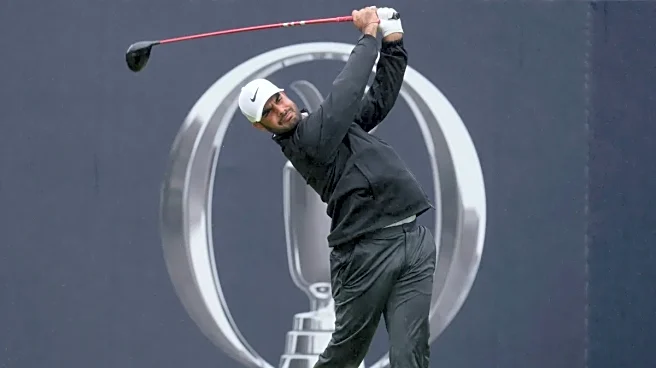

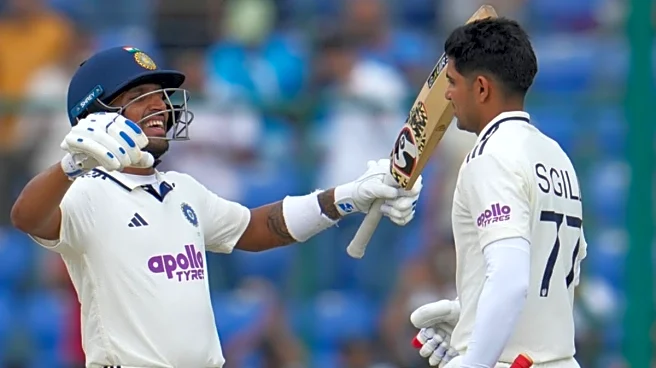

/images/ppid_a911dc6a-image-176029362554440166.webp)
